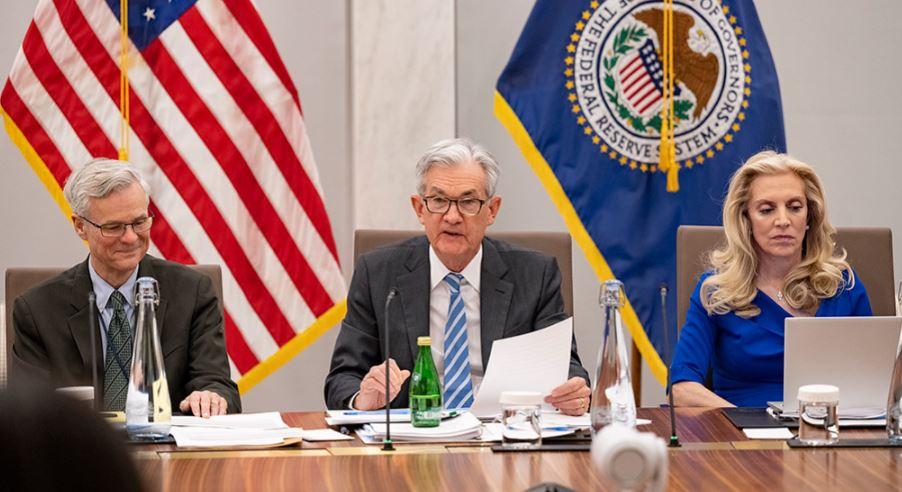
In recent years, Congress has attempted to add various new mandates to the Federal Reserve’s mission. In 2020, Democrats introduced the “Federal Reserve Racial and Economic Equity Act.” Then, in 2021, pundits and politicians were telling us that it’s the Fed’s job to “combat climate change.” These are just the latest efforts to use the enormously powerful central bank to achieve political ends to the liking of elected officials.
This is a helpful reminder, of course, that the Fed is not independent from politics. The Federal Reserve has never been politically independent, and it certainly isn’t so now. Fed independence is a fairy tale academic economists like to tell their students. The debate over new mandates has also highlighted the fact the Fed already has no fewer than three mandates explicitly written into law: moderate long term interest rates, maximum employment, and stable prices.
In practice, however, the Fed has only two mandates because the Fed is so limited in what it can do to target long term interest rates in a global marketplace. This has led to what is now a de facto “dual mandate.”
This dual mandate is now all about maximizing employment while also maintaining “stable prices.” What this all means is never precisely spelled out in policy or law. It also changes over time. zero-percent CPI inflation was once the goal. Now the goal is the arbitrary two-percent standard. Similarly, what is meant by “maximum employment” is subject to the arbitrary definition of “full employment.”
In any case, it has been the view of central bankers for decades that one of the easiest ways to “maximize” employment is to embrace accommodative monetary policy. This, however, works counter to the mandate of stable prices by inflating the money supply. This leads to price inflation in the medium to long term.
So, the two mandates are essentially at odds. So which half of the mandate to focus on or emphasize? That’s up to the Fed.
In practice, however, experience suggests that the Fed tends strongly toward embracing the “maximum employment” side of the equation. Time and time again, central bankers have chosen to downplay the stable-prices mandate and embrace expansive monetary policy.
How the Fed Favors Maximum Employment
As a de facto instrument of the federal government, Federal Reserve policy tends to focus on what the federal government focuses on. So, the Fed was moved in the direction of greater focus on employment with the passage of the Employment Act of 1946. The Act stated:
The Congress hereby declares that it is the continuing policy and responsibility of the federal government to use all practicable means consistent with its needs and obligations and other essential considerations of national policy with the assistance and cooperation of industry, agriculture, labor, and state and local governments, to coordinate and utilize all its plans, functions, and resources for the purpose of creating and maintaining, in a manner calculated to foster and promote free and competitive enterprise and the general welfare, conditions under which there will be afforded useful employment for those able, willing, and seeking work, and to promote maximum employment, production, and purchasing power.
Although highly controversial at the time, the belief that the federal government ought to intervene to maximize employment—whether through fiscal or monetary policy—became well accepted over time. In terms of Fed policy following the adoption of the act, Allan Meltzer—author of a huge history of the Federal Reserve—concludes that “Interpretations of the 1946 Employment Act usually emphasized primacy of full employment.”
By the 1970s, policymakers were looking to make the Fed’s role in all this more explicit. That came with the adoption of the Humphrey-Hawkins Act or the “Full Employment and Balanced Growth Act of 1978” It was then that Congress finally made it explicit that the Fed was to pursue the three goals of “stable prices, maximum employment, and moderate long-term interest rates.”
As had been the assumed practice for decades, the Act also assumed that the Fed would act to maximize employment. However, after a number of years of high price inflation throughout most of the 1970s, the Act also explicitly mandated stable prices. The mandate included some specific goals as well. For instance: “unemployment should not exceed 3 percent for people 20 years or older, and CPI inflation should be reduced to 3 percent or less, provided that its reduction would not interfere with the employment goal.”
Moreover, by 1988, the Act imagined that the official inflation rate should be reduced to zero:
Upon achievement of the 3 per centum goal … each succeeding Economic Report shall have the goal of achieving by 1988 a rate of inflation of zero per centum.”
The “stable-prices” aspect of the legislation became more urgent for both the public and policymakers by the early 1980s as price inflations rates soared to multi-decade highs. Under Fed Chair Paul Volcker, the Fed did indeed shift away from the emphasis on maximum employment for an extended period. This was fairly novel in the post-war history of the Fed, and it’s perceived success in stabilizing both prices and the economy after the 1982 recession gained additional political support for the perception that the Fed ought to “fight inflation.” Meltzer writes on how this was a remarkable change given decades of policy that focused on full employment rather than price inflation:
Perhaps the most enduring lesson for central bankers from the Great Inflation and subsequent disinflation was that the responsibility for stopping inflation fell on them…The weights [Fed policymakers] gave to inflation and unemployment did not shift back to their earlier values and sustained high inflation did not return in the next two decades.
For Meltzer, this period of widespread support for the Fed as price-inflation fighter “remained until the credit crisis that started in 2007.”
On this point, Meltzer is perhaps too accepting of the notion that the Fed consistently embraced its inner hawk during this period. While CPI inflation rates might have remained low during this period, the Fed after 1985’s Plaza Accord, and during the time of Fed chairman Alan Greenspan, embraced a relatively weak dollar and increasingly expansive monetary policy which ultimately created the bubbles that led to the various crises following 2007.
Nonetheless, there is little doubt that after 2007, the Fed did indeed explicitly and openly swing back to a policy stance favoring the maximum-employment —i.e., inflationary—side of the Fed’s dual mandate. The drift in this direction was already evident by the mid-1990s, however. This was when the term “the dual mandate” became part of the common vocabulary at the Fed. The invocation of the dual mandate as a policy mantra was increasingly done so as to justify not stable prices, but maximum employment, and with it, inflationary policy.
In 2010, the Fed’s Federal Open Market Committee began to use a familiar rhetorical formula in its statements and—after 2011—its press conferences. It went like this: state that price inflation is sufficiently low to satisfy the Fed, and then invoke the dual mandate as a reason why the Fed must stick with ongoing loose monetary policy.
What exactly counted as “low” inflation, of course, remained malleable, and the Fed generally ignored the actual text of Humphrey-Hawkins which called for zero-percent price inflation after 1988.
Choosing the Inflationary Side of the Dual Mandate
Instead, by 1996 the Fed increasingly moved toward implementing its newly invented and arbitrary “two-percent” standard of inflation. Having achieved the statutory three-percent CPI inflation goal, the FOMC at its July 1996 meeting then considered whether or not to keep pursuing the zero-inflation goal. Instead, FOMC member Janet Yellen presented a paper that called for of abandoning zero-inflation in favor of perpetual “low inflation” at two percent. Eventually, not even that standard was inflationary enough to fit within the assumed demands of the dual mandate. In recent years, the Fed has embraced the two-percent average standard calling for CPI inflation above two percent so long as the average over time comes in around two percent.
Over time, repeated referenced to “the dual mandate” were really just calls for continued activist monetary policy and even for the wildly experimental “unconventional monetary policy” employed after 2008.
All in all, the dual mandate tends to offer a convenient excuse for why the Fed can’t stop with stable prices, but instead must embrace easy money in the name of maximum employment. Theoretically, the explicit embrace of “stable prices” in legislation in the late 1970s was progress of a sort. But there’s always a gap between policy as written and policy in practice. The bias toward stimulating employment via easy money has clearly been the dominant bias for—at least—the past 70 years.






